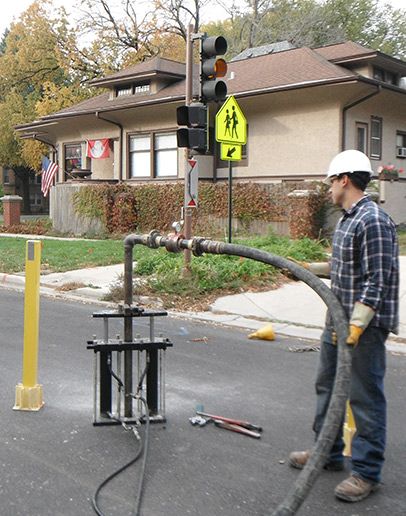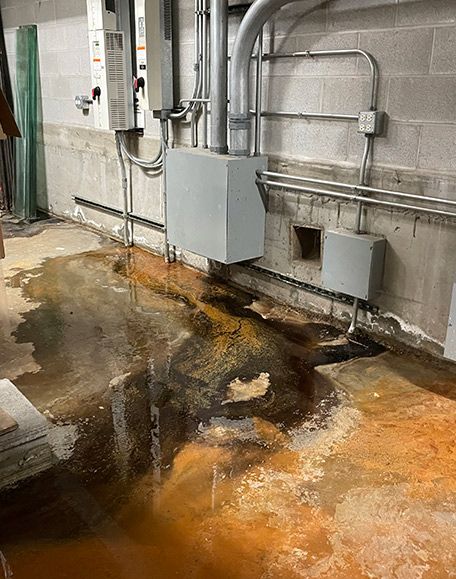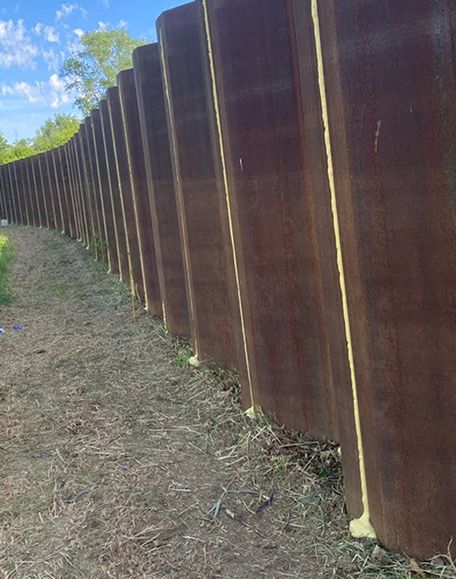Infrastructure Repairs
Void Filling
Voiding has numerous causes and has the potential to cause serious harm to pedestrians, building tenants, vehicles, and structures dependent upon their location. Two of the common areas where voids are found are due to below-grade infrastructure failures or erosion below roadways.
When voiding occurs in roadways, typically due to utility line failure and erosion, corrective procedures may include excavation and replacement. Often, soil decompression is a common side effect around the excavated area. Over time, as soils compress residual voiding occurs. To treat the effects of soil decompression, Lincoln performs soil densification using slurry and compaction grouting methods to fill voids and densify soils. Voids behind soil retention walls or below floor slabs are fully grouted using cementitious or foam grouts to provide load-bearing lateral support and minimize or eliminate ongoing erosion.


Water Cutoff
We at Lincoln are water cutoff and flooding experts! From one gallon to 1,000 gallons per minute, we have treated them all. Our forte is finding and stopping decades-old infiltration problems.
No matter the volume, the source, site conditions, or constraints, we have seen and successfully treated hundreds of heavy inflow conditions.
Lincoln’s experience, knowledge of products, state-of-the-art equipment, and knowledge of water migration through soils are used to construct below-grade water cutoff walls in the most difficult applications. We are highly experienced when treating below-grade inflow in the following infrastructure systems or excavations:
- Tunnels
- Pipelines Vaults
- Foundations
- Lift Stations
- Tanks
- Dams
- Elevator Pits
Sinkholes
The most common cause for sinkholes is below-grade utility line failures followed by soil erosion. Typically following the corrective measure to address the root cause of the sinkhole, it is necessary to fill voids and densify poorly consolidated soils using a cementious Redi-Mix grout and/or high-density, rapid PEF (polyurethane expanding foam).
Sheet Pile Joint Sealing
Sealing sheet pile joints has many benefits and is often required by municipalities for urban site developments. Frequently, municipalities and developers require that interlocking sheet joints be sealed to inhibit soil loss and water migration between the joints. If allowed to migrate between sheet joints, adjacent soils can decompress causing structures and infrastructure to settle. Shoreline soil retention and contaminant containment are other applications/uses for joint sealing.

Urban Fill Grouting
Oftentimes, municipalities and developers are faced with extraordinary costs to develop urban sites due to the presence of urban fill comprised of non-native disturbed materials, demolition debris, asphalt, cinders, wood ash, brick, and coal. This is why more and more developers are recognizing the benefits of treating low-strength in-situ soils versus removal and replacement.
Urban fill is comprised of non-native, disturbed material in urban areas that may be mixed with demolition debris, asphalt, wood ash, brick, coal, and coal ash. Some polycyclic aromatic hydrocarbons (PAHs) and metals are widespread and may be present in this material. Metals, such as arsenic, lead, chromium, and nickel are also widely distributed in the environment and may be either naturally occurring or from the debris present in the fill. Depths can vary widely and often relate to the depths of the foundation of previous structures. 2’ – 12’ is not uncommon.
Infrastructure constructed on urban fill is susceptible to excessive and reoccurring distress due to settlement. Buildings, structural components, and buried utilities shift and crack as urban fill components deteriorate and soil decompression occurs.
The three types of soil grouting methods used to treat the effects of urban fill are compaction grouting, slurry grouting, and permeation grouting.
- Compaction grouting densifies weak soils
- Slurry grouting fills voids and densifies weak soils
- Permeation grouting fills small voids, strengthens soils, and inhibits water migration.
Dependent upon site conditions, one method or a combination of methods will be used to treat the effects of urban fill on existing or planned developments.

